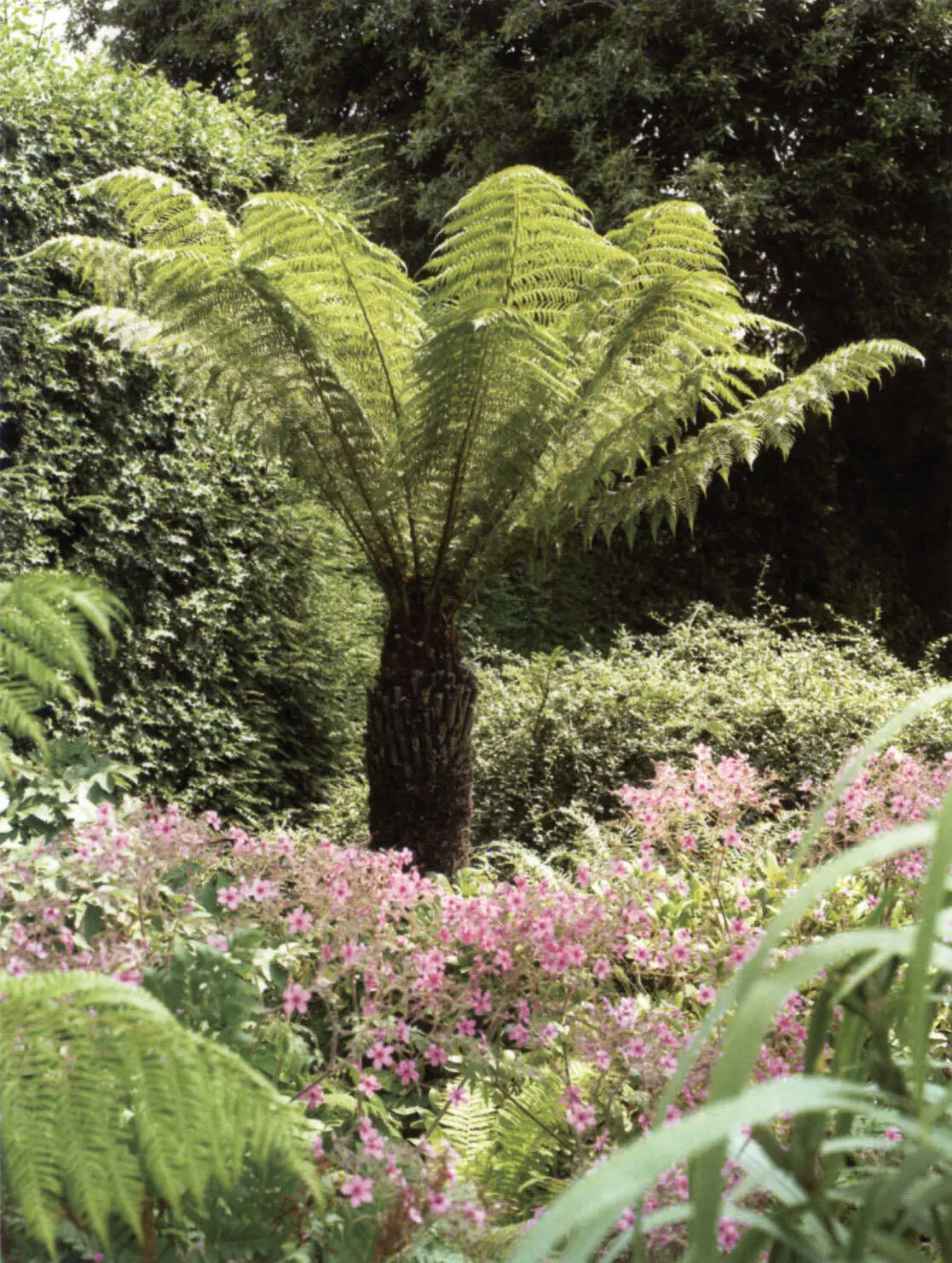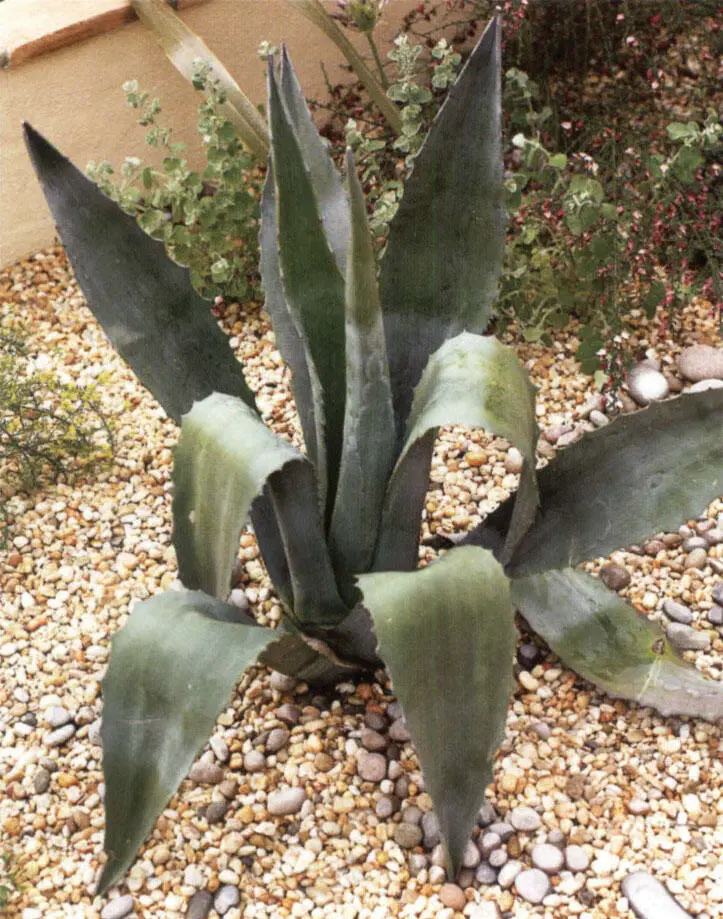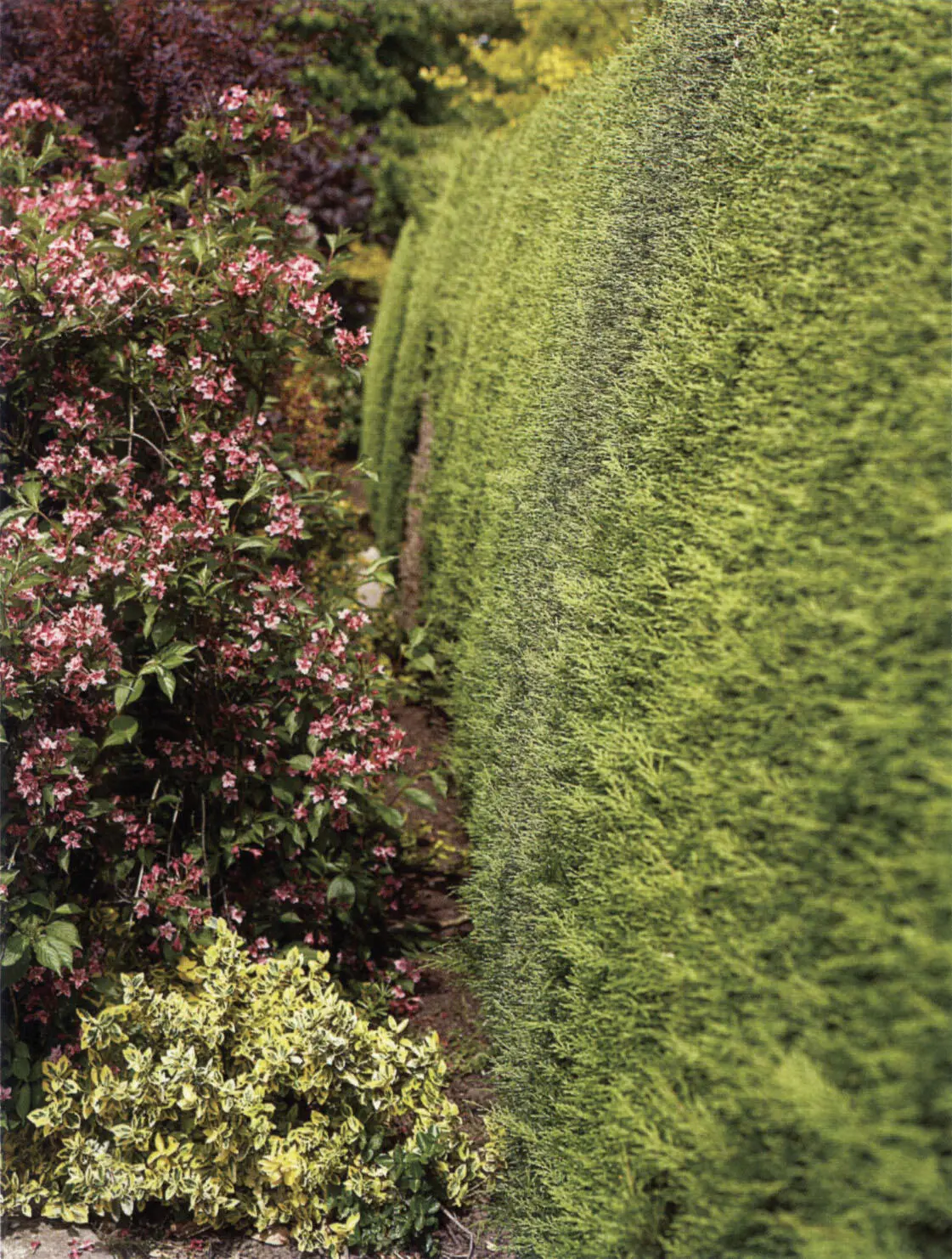
Even in cool temperate weather, microclimates within gardens can enable frost-sensitive plants such as tree ferns and Geranium maderense to be grown.
Temperature
There are two main aspects to consider – air temperature and soil temperature. Both of these are vital factors in determining the successful growth of plants. Almost all plants purchased from garden centres are now informatively labelled. There should be a maximum and minimum temperature given, between which the particular plant will do well. In some nurseries, stock is not always so well labelled, so don’t be afraid to ask someone who works at the nursery if any plant you want to buy fits in to the maximum and minimum temperatures in your garden.
Frost is a hazard and can put plants at great risk. A frost occurs when the temperature falls below o°C (32°F) on clear, still nights. Local weather stations measure the temperature 1.5m (2yd) above ground level, so if the forecast in your area is for a temperature of 4°C (39°F), the temperature of your plants at ground level could be close to freezing.
Severe frosts can damage or put at peril even hardy plants, but in general terms it is important to know when the danger of spring frosts is likely to be over in your area. It is only after this date that you should plant out tender plants and summer vegetables. If a frost is forecast, it is advisable that you protect any plants that you know to be at risk from such a low temperature (see here).
You’ll often hear the term ‘frost pockets’ used by gardeners. Frost pockets are low-lying areas such as valleys and hollows where cold air (which is heavier than warm air) flows downhill, accumulates and causes frost. So if you live in a valley or hollow you should take extra care against frost.
Climate change:Almost all scientists now agree that the earth’s climate is changing. The effects of global warming are much debated and contentious, but there is widespread expert opinion agreeing that there will continue to be a general rise in temperature, with a resulting frequency of flooding and droughts, as well as other extreme weather conditions all over the world.
Global warming will deliver a mixed bag to us gardeners as milder winters will allow a greater number of tender species, such as citrus fruits, to be grown outdoors in temperate zones, as well as increased yields of many vegetables, fruit and flowers due to increasing levels of CO2, which plants absorb in photosynthesis. Problems will include an increase in pests and diseases as well as increased maintenance to cover the longer growing season, and certainly many species of plants will suffer or face extinction. As gardeners we are all in a position to make a positive difference to our environment simply by planting and caring for plants appropriate to our environment. Recycling organic matter, improving the soil and planting for wildlife are just a few of the ways we can start to redress the balance and help to heal a planet that is under stress.
Plants you can expect to see more of include olive (Olea europaea), ginger lilies (Hedychium), banana (Musa basjoo), Canary Island date palm (Phoenix canariensis) and century plant (Agave americana).

At present, this Agave americana might not survive an average temperate winter. However, with milder winters due to climate change, such plants will become more commonly seen. In the right conditions, and over 30 years, these plants can grow up to 2m (6ft) high.
Wind
When it is severe or continuous, wind can cause much physical damage to plants. The best way to protect your garden from wind is to create windbreaks. These are simply plantings of trees or hedging that will reduce the speed of the wind by taking the brunt of the wind themselves, thus ‘breaking’ the wind. Natural windbreaks are generally more successful than man-made ones. So, if you have an area of garden that is particularly exposed to the wind, you should consider planting a screen of trees or shrubs that themselves are wind resistant. Ask advice from your local garden centre as to which plants these would be for your area.

Hedges are the perfect barrier for providing shelter from wind within a garden.
Rainfall
Rainfall is an essential aspect of climate that provides the water for your plants to grow. In areas of low rainfall, irrigation schemes can be very effective, but even they still depend on rain falling at some time. Most of our gardens still receive the water that they need through regular rainfall. Unfortunately, rain does not fall at predictable intervals and in consistent quantities, so your plants need to be able to cope with this variability in rainfall. This can sometimes present two main problems:
Waterlogging of the soil,occurs with consistent heavy rain where drainage is poor.
Drought conditions,where rain is sparse over long periods and the soil has dried up and the ground has gone hard.
In both cases, action can be taken to improve matters. Drainage of waterlogged soil can be improved by the addition of coarse grit. Cultivation of the soil will further improve matters (see here). If the problem is persistent, a more complex solution has to be found, such as installing underground drains. This is an area where professional help should be sought.
In dry soil conditions, the addition of organic matter will assist water retention, but generally a regular watering regime has to be undertaken to ensure that the soil is kept moist. If you have free-draining soil and persistently dry conditions, then you should choose plants that suit the conditions. Grasses and many plants from the Mediterranean region are suitable for dry conditions. There is always an answer for whatever the situation.
Plants for wet positions
Betula nigra (river birch)
Caltha palustris (giant marsh marigold)
Gunnera manicata
Ligularia ‘Gregynog Gold’
Lysichiton americanus (yellow skunk cabbage)
Matteuccia struthiopteris (ostrich fern)
Persicaria amplexicaulis (bistort)
Rheum palmatum ‘Atrosanguineum’ (Chinese rhubarb)
Rodgersia aesculifolia
Trollius europaeus (common European globeflower)
Humidity
Humidity is the amount of water vapour in the atmosphere. It is also affected by the moisture content of the soil. At one extreme, high humidity can encourage the growth of mould and fungal diseases, while a low humidity can increase the rate at which plants dry out and wilt. Low humidity can be improved in a garden by introducing water features and soaking all hard areas and soil, occasionally hosing down with water. Gardeners often refer to this as ‘damping down’. The opposite extreme to low humidity occurs mainly in rainforests, where plants adapt to these very particular conditions. Careful selection of moisture-loving plants is therefore important.
It is unlikely that you will have a perfect balance of all of these elements of climate in your garden, but a basic understanding of your local conditions will help enormously. Knowing that you can take some steps to work with the climate and not against it will help to improve your gardening results.
Читать дальше















